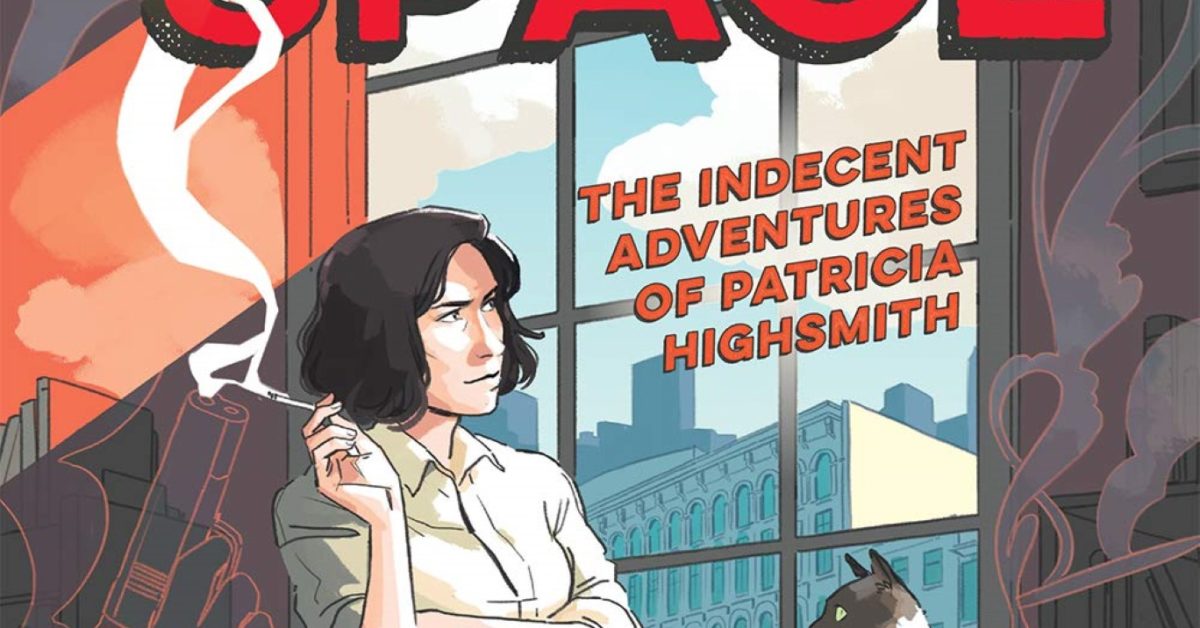
She’s handsome and alluring in masculine clothes and a long brown trench coat, with her hair cut to a short, wavy bob. Templer provides the first fully-body shot of Pat in the middle of the second page. Both are in a bar, specifically NOT a lesbian bar (“This isn’t that kind of place,” says the bartender.) On the next page, we learn that the lighter belongs to a redheaded woman, who is sitting incredibly close to Pat. Pat herself is in need of a light for her cigarette, and the first color visual we get is the orange flame of a lighter flaring to life. (Ellis calls her “Pat” in the introduction, creating some space between the subject of the comic and the real, historical figure, so from here on out we’ll discuss Pat, not Highsmith.) The comic starts with darkness - specifically a textured, painted black that immediately follows the prose introduction. It’s worth spending a moment with the start of the comic proper – not the written introduction but the comic itself, and how the creators introduce their character – to examine how Ellis and Templer ensure their own perspective permeates Pat’s story.

Rather, they see her fully and present her wholly, flaws and all. Ellis and artist Hannah Templer take all Highsmith’s flaws into account and express their own values through the comic’s visuals and perspective, but they aren’t cruel to their subject. She was not a good person, and did not often try to be a better person. The real Highsmith was a lesbian who gave queer women an important and affirming work of art called Carol (initially The Price of Salt, later republished under the title Highsmith preferred.) She was also anti-Semitic, racist, and simply careless with other people’s feelings.

Writer Grace Ellis offers other descriptors in her introduction to the comic, calling it a story that would be told around a campfire, a fictionalized narrative, and, quoting Highsmith’s biographer, Joan Schenkar, a “fantasia.” I can only describe it as a story about a real person that, instead of striving to be pure fact, instead grapples with that person holistically. I want to be clear: Flung Out of Space is not a biography, and that is its greatest strength. It is a critical, caring, funny, and heartbreaking story in which the hands of the artist and author are visible and essential to depicting Patricia Highsmith as a whole, complex person.įlung Out of Space Grace Ellis (Writer), Hannah Templer (Artist) It’s also about her years-long attempt to try and expunge her desire for other women.


At its simplest, Flung Out of Space is about Patricia Highsmith’s quest to escape the drudgery of writing comics and get her novels published, including Carol, considered the first lesbian romance with a happy ending. I don’t have the right words to prepare you for this comic.


 0 kommentar(er)
0 kommentar(er)
